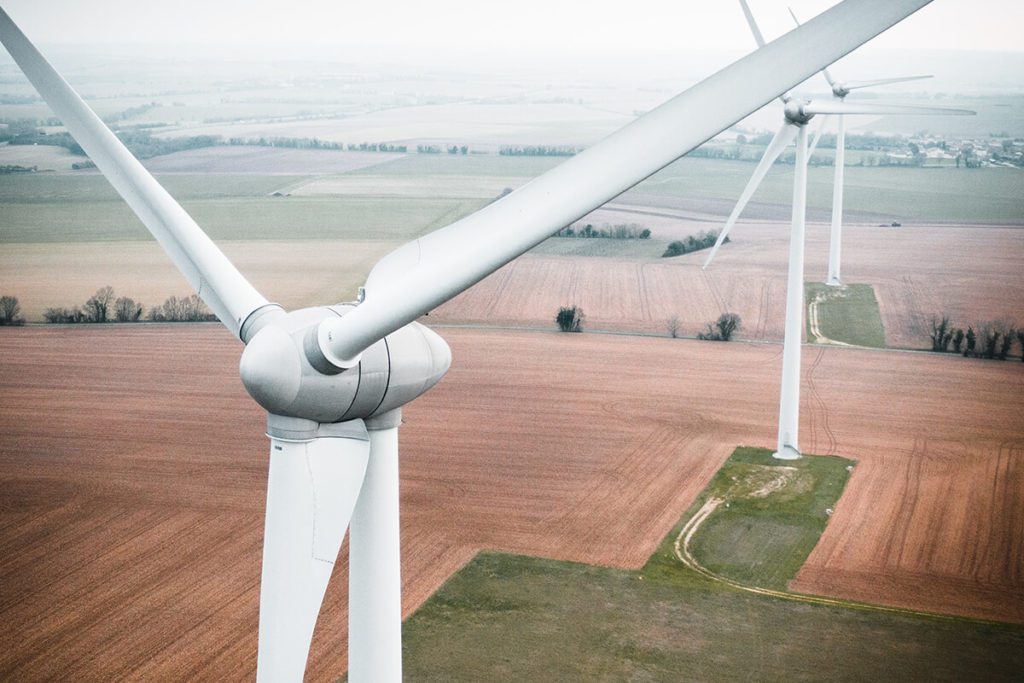Energy
Home – it’s somewhere we need to feel safe and warm. That involves using energy to heat or cool your property, generate hot water and power all your appliances. Around 22% of the UK’s carbon emissions come from our homes, as a result.
There is so much energy unnecessarily seeping out of our homes each day that we don’t even miss. That means there’s a whole lot we can do to improve in this area without needing to suffer loss of comfort.
A huge extra motivator here is that taking these steps will also save you money on your bills. There’s something here that’s achievable for everyone. Some other steps require investment that might take a little longer to work towards- although in the long term, they too will save you money.
So, we’ve ordered this checklist starting with the most universally within-reach actions. You can move through it gradually as your own time and pocket allows.
1: Install panels behind your radiators
Some of the heat from your radiator goes straight into the wall behind it, which is fine if you’re after toasty walls. Chances are you’d prefer to feel the benefit yourself, so installing a reflective panel behind each radiator will reflect the heat back into the room.
Tin foil is one way of doing it, but it’s worth spending some money on reflective panels from your local DIY shop. They could save you around £13 and shave your carbon footprint by 70kg each year.
2: Use your central heating effectively
Every time your heating goes off and then on again, you waste a lot of heat just heating up the cold walls before the space inside gets cosy. Set your thermostat to a low, liveable temperature (for most people, around 15 degrees celsius). It’s much better for your health that way too. Set it to come on an hour or so before you wake up and/or get home in the evening. Make sure you have cosy clothes and blankets you love for those times you need the extra warmth, and you’ll soon stop feeling the need to over-heat your house.
3: Low-cost alternatives to double glazing
If you can’t install double glazing – for example, if you live in a conservation area, period property, or listed building – you can install secondary glazing, use heavy curtains, or preferably both.
Secondary glazing is a pane of glass that’s fixed to the inside frame of your window. Installing secondary glazing in an otherwise single-glazed home could save you around £70 a year.
You can also buy insulating film to improve the energy efficiency of sash windows. This can make a big difference to the temperature of your home, and it’s available at most DIY shops.
4: Replace old storage heaters
You can also make big savings if your home has storage heaters instead of gas-powered central heating. Many modern models have built-in thermostats and are ‘fan-assisted’ to help spread heat around.
Upgrading to a modern slim-line or fan storage heater with advanced controls could save up to £145 on your annual energy bills.
A fancy new high heat-retention storage heater uses low-cost, off-peak energy to provide the most economical heating. Upgrading to one of these could save you £285 and cut your carbon impact by around 670kg a year.
5: Get a new boiler
We know they can cost an arm and a leg, but if yours is past its peak it can cost you more in the long run. Newer, more energy-efficient models often have a full set of heating controls that let you choose when and where you heat your home.
Look for an energy saving label when choosing which boiler to buy. Like household appliances and double-glazing, boilers must clearly display an EU Energy Label when offered for sale.
The rating makes a big difference. Replacing an old D-rated boiler with an A-rated one with a full set of heating controls could save around £110 a year, and reduce your carbon footprint by 570kg.
6: Insulation
Insulation is essentially your home’s winter coat. And as anyone who’s ever left the house wearing a thin jacket in January knows, it’s worth investing in a really good one.
In the loft
Loft insulation creates a warm barrier between you and the cold air outside. There are different types of insulation, like thick rolls of material, rigid boards which are cut to size, or special foam that’s sprayed into place.
It can be installed either between the joists – those horizontal beams along the floor of your loft, or between the rafters – the angled wooden beams that support the roof of your house.
Insulation works by trapping heat inside your house. It doesn’t stop the heat loss completely, but it will slow it down, especially if it’s at least 270mm thick.
That can get pricey, but, when you consider that up to 26% of heat could be escaping through your roof, it’s worth it.
If you have no insulation in your loft, installing 270mm of new insulation could save you up to £135, and avoid 580kg of carbon emissions being wasted every year.
And if you have some insulation already, topping it up might mean you save more too. Increasing the thickness of your insulation from 120mm to 270mm could save an extra £13 a year on your energy bills. It all adds up.
In your walls
A third of the heat lost in an uninsulated home escapes through the external walls, so insulating them is definitely an investment worth making.
The first thing to do is work out what type of walls your home has. There are two types: solid walls and cavity walls.
If your house was built before the 1920s, then chances are its walls are solid. Installing internal or external solid wall insulation could save you around £210 a year and reduce your carbon footprint by 890kg.
If your home is modern, then it probably has cavity walls – or walls with a gap between an outer layer of brick and an inner layer of concrete block or more brick. If it was built since the 1990s, then insulation may have been run through the gap in the cavity walls already. But if it wasn’t, adding insulation could save you up to £155 a year and cut your footprint by 660kg.
Under the floor
Heat can also escape through your floor, with around 8% of heat lost to the ground beneath an uninsulated home.
So adding insulation under the floorboards of the ground floor is a great way to keep your home warm. If your home is relatively modern, it’ll probably have a solid floor made from concrete or a similar material. And if it’s old, it’ll probably have a suspended timber floor made from floorboards.
Whether you lay insulation over solid floors, or beneath the floorboards, it’ll save you around £40 a year and cut your carbon footprint by about 175kg too.
7: Double glazing
Double or even triple glazing your windows keeps noise out, and warmth in. Window manufacturers use the same energy savings scale as appliances to show how energy-efficient they are, from A++ (tip-top) to E (the energy equivalent of a teacher writing “see me” on your homework).
Look for the ‘British Fenestration Rating Council’ or ‘BFRC’ on the energy label of any windows you’re looking to buy. This means their energy efficiency has been verified by the organisation in charge of the energy ratings for windows.
A higher energy rating does make windows more expensive, but installing A++ rated double glazing in your home could save you up to £95 off your energy bills, and cut your carbon footprint by 405kg of CO2 a year.
Installing the cheaper A-rated double glazing will still save you around £75 a year.
8: Buy solar panels to generate your own energy
Ok, so installing solar panels is not for the faint-hearted. They involve a significant outlay, and the returns are long-term. But by generating your own electricity, you could save anywhere from £85 to £220 on your energy bill each year, and over time that adds up.
9: Sell your energy back to energy companies
Solar panels can also help you make money on top of the savings they offer. If you’re generating energy you’re not using, energy suppliers will pay you for it every time you export it to the grid. Find out how to sell your electricity to Bulb.
Ready to make an impact?
Make your pledge to a low carbon future. Pick a cause or issue that drives you – campaign, spread the word, educate your family and community.
Now that you have discovered the best ways to reduce your impact in the planet, and made your pledge to improve it, join our community and offset your remaining carbon excess whilst supporting some of the best hand-picked projects and campaigns to improve our future.


